Last year, my cousin Kathy was renovating her apartment & thinking about growing some houseplants. I suggested that she plant a Moonshine Snake Plant as it is a natural air purifier & has attractive leaves. But that was not the end.
As I studied agriculture, she kept asking me about Moonshine Snake Plant care & that’s the backstory for me writing this article.
Care means providing the requirements & keeping them under supervision. In this article, I am going to talk about all the requirements that a Silver Moonshine has. Hopefully, my knowledge will help you as it did for Kathy. Let’s start.
Moonshine Snake Plant Care
Pot Size
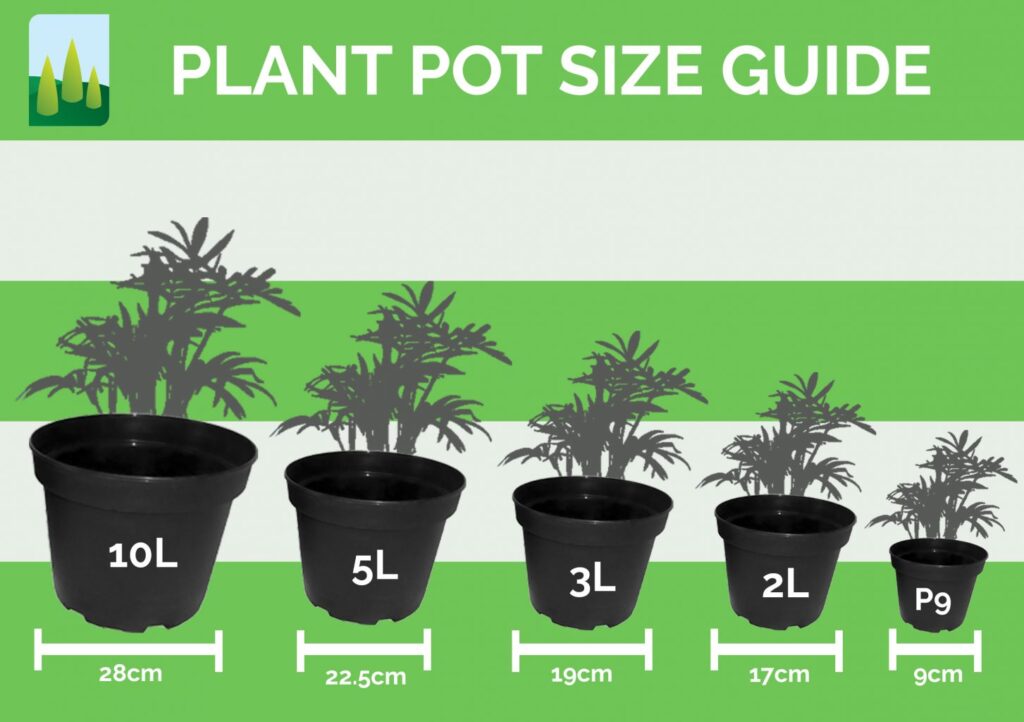
Like all other Snake Plant cultivars, Moonshine Snake Plant is mainly grown indoors as a houseplant. Therefore, the first thing to consider is a perfect pot for hosting the plant. Now, the question arises, what is the recommended pot size for a Moonshine Snake Plant?
Well, for a plant of 6-8″ height, a pot of 4″ diameter is ideal. And you may have to take a large size pot every time you repot. About Moonshine Snake Plant pots, all you need to care about is the pot width, not the depth. Why?
Because rather than growing deep, their rhizomes radiate out. And clearly, a deep pot holds more soil, which can cause them to stay too wet.
Soil
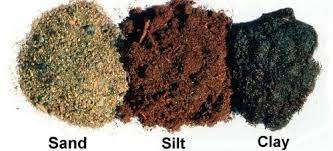
Once your pot is ready, it’s time to pay heed to the soil. Sansevieria Moonshine is a succulent plant & they demand sandy potting soil that secures a super active drainage system.
Either you can buy a succulent potting mix or make yourself by mixing one part coarse sand, one part perlite, and two parts standard potting soil. Here, perlite helps to promote fast drainage, and standard potting soil is suitable for storing some moisture.
Additionally, Coconut fiber (coir), crushed gravel, poultry grit, or charcoal particles can be added to the soil to make a light, airy potting mix. So, the bottom line is, the soil should be well-drained, able to retain some moisture but not soggy & damp.
Light
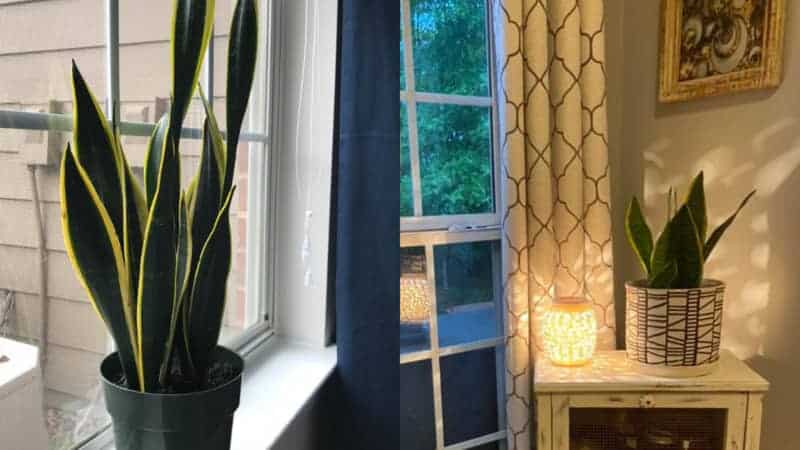
To place the pot at the right spot, you must know the optimum sunlight requirement of the plant. For most of the indoor plants, we put the pots where sunlight hits directly.
But the Moonshine Snake Plant shows a different taste. These plants thrive in indirect, moderate to bright sun. Since succulent plants are fleshy & retain water, Sansevieria Moonshine can survive in direct full sun (if not too severe) but daily 6 hours of filtered & bright sunlight is perfect for optimum flourishment.
Considering its requirements, the best indoor spot for Moonshine Snake Plant is an east-facing or west-facing windowsill.
Temperature
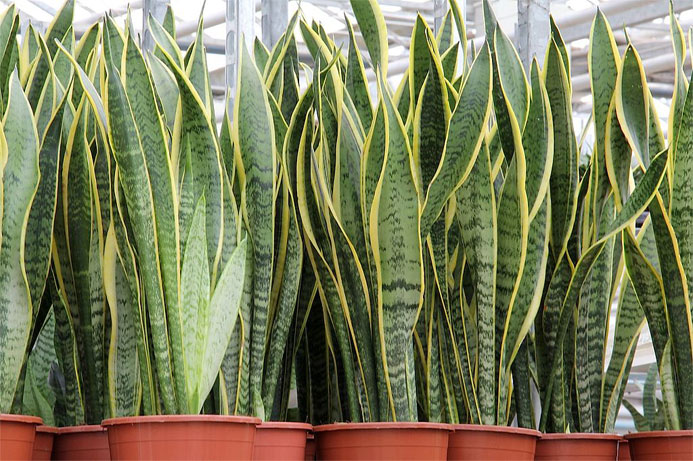
Another name for the Moonshine Snake Plant is Silver Moonshine. Well, the silvery green leaves are undoubtedly attractive but, the poor temperature may degrade the beauty.
The plant is native to West Africa, where the typical day temperature is above 66 °F. So, indoor or outdoor, in both cases, Silver Moonshine grows perfectly when the temperature ranges between 55°F and 85°F. That is almost a regular room temperature. But if it goes below 32°F, your plant may lose the silvery shining of its leaves.
Now, the temperature is not yours to control. All you can do is, adjusting the requirement with artificial methods.
Humidity
Most of the time, we overlook the influence of humidity since we can’t see it and can’t tell the difference unless there’s a significant difference. Well, humidity isn’t a high priority for the Moonshine snake plant.
The plant is endemic to West Africa, where the climate is hot and arid. That makes it a resilient and adaptable plant that can quickly adapt to its environment. Therefore, consistent indoor humidity is ideal for growing Moonshine.
However, if you observe brown tips on your leaves because of dry air, you may moisten them occasionally. But cleaning the fleshy green leaves with a moist towel once a week is more preferable than that.
Watering
Succulent plants like the Moonshine Snake Plant are slow growers which store water in their leaves, stems & roots. And that’s why Moonshine does not require much water.
Now, for perfect watering, keep the following things in mind-
- Provide water only when the top 5 cm of the potting soil is dry.
- During the growing season(Spring & Summer), water twice every month.
- Reduce watering to once a month during the winter.
- While watering, make sure the leaves don’t get wet.
- Make sure the soil is well-drained & thereby no water-logging condition. Otherwise, root rot may occur.
Fertilizer
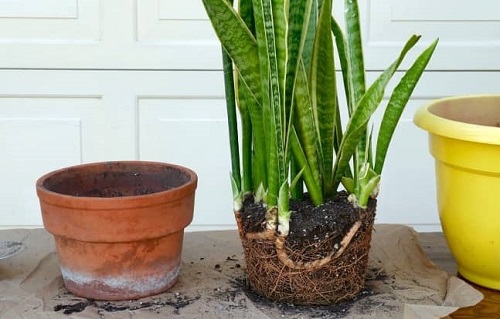
The general approach for fertilizing is to evaluate the nutritional content of Moonshine’s potting soil and apply fertilizer as needed. Usually, succulent plants, on average, require less nitrogen than potassium and phosphorus.
The good news is, because of Silver Moonshine’s low fertilizer demand, most growers only use fertilizer twice a year. And the optimal time to apply fertilizer is during the growing season (spring and summer) when a boost would be very beneficial.
Diseases
As Silver Moonshine is a hardy plant, it can resist numerous infectious diseases, thanks to its inherent immunity and hardiness.
However, it still becomes diseased as a consequence of our foolish missteps. As a result, pathogens can develop diseases such as Root Rot, Soft Rot, Red Leaf Spot, Brown Tips, etc.
Root Rot
Sansevieria Moonshine develops root rot when the potting soil has inadequate drainage and becomes damp due to overwatering.
To fix this problem during infancy, you may need to repot the plant with high-quality soil and be more vigilant about watering, such as when to water, how much to water, and so on.
Soft Rot
We occasionally notice that the bottom of the cutting is yellowing and becoming mushy. Yes, it is Moonshine Snake Plant’s soft rot. It happens when the leaves are kept moist for an extended period of time. This makes it easier for a certain bacterium to cause soft rot.
So, what’s the treatment? First & foremost, avoid watering directly to the leaves, and secondly, remove the infected leaves as soon as possible.
Red Leaf Spot
Wet leaves might also cause this fungal attack. As a result, you should be wary of irrigation. You may keep your plant safe if you do it correctly.
Now, as the name suggests, the first symptom is red dots on the leaves. And to defeat it, remove the sick leaves first, then use a systemic fungicide to protect the other leaves.
Brown Tips
Brown tips of leaves can be caused by a variety of factors, including underwatering, fertilizer overuse, a lack of light and nutrients, etc. So, make sure your Silver Moonshine has the optimum levels of the above components. That is all you can do.
Insect Attack
Though spider mites and mealybugs are common visitors to Silver Moonshine, the harm they do may be avoided if you act quickly. But first, you must identify them properly.
Mealybugs are fuzzy-looking pests that are little and white.
Spider mites have a dark red color that lives on the insides of leaves. An easy way to spot spider mites is by looking for silk webs at the edges of leaves.
However, both bugs will drain the sap from your Moonshine’s leaves, affecting the plant’s health. Here are some steps that you can follow to control them-
- Quarantine the infected plant.
- Rubbing alcohol, insecticidal soap, neem oil, etc are great insecticides to kill these insects.
- Occasionally wipe down the leaves with a damp towel because insects do not like moist surfaces.
Propagation
We frequently strive to expand our plant collections by propagating them, and there are two ways to do it with the Moonshine Snake Plant. The first is division, and the second is leaf cutting.
You must split the entire plant (including roots and leaves) into two or more portions and transplant using the division method. Leaf-cutting, on the other hand, is just cutting a healthy leaf at the base, allowing it to callus, and then repotting it.
In all cases, the ideal time for propagation is in the spring and early summer, and new leaf development usually takes 3-4 months.
Pruning
Silver Moonshine is usually pruned for two reasons. Either to keep the plant at a certain height or to eliminate sick or broken leaves. You must trim the leaves at the soil line in both circumstances.
Furthermore, to maintain height, merely chop off the highest leaf you have. Your Moonshine has a new height now.
Final Words
You might have heard that the Moonshine Snake Plant is low-maintenance. Although it takes less maintenance than most other houseplants, this does not imply you should leave it alone.
The silver lining is that the more you care, the brighter the leaves become. As a result, if you want a healthy Silver Moonshine, you must provide it with the proper atmosphere, attention, and frequent care.
